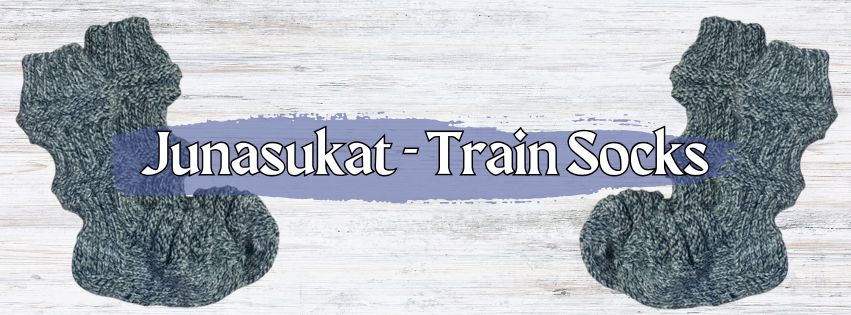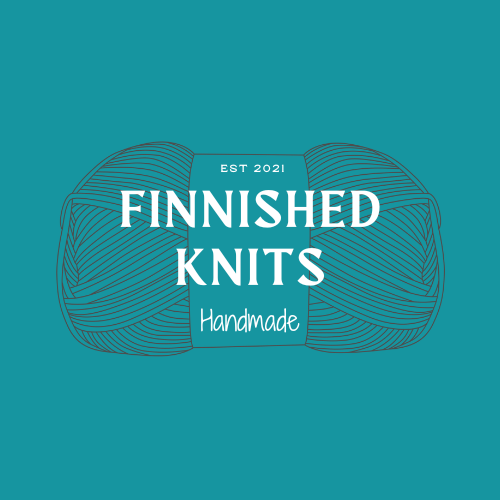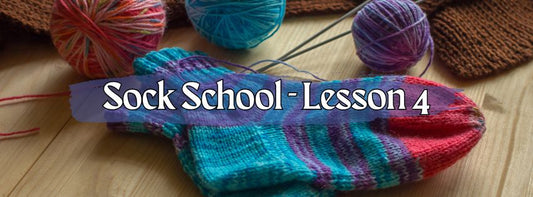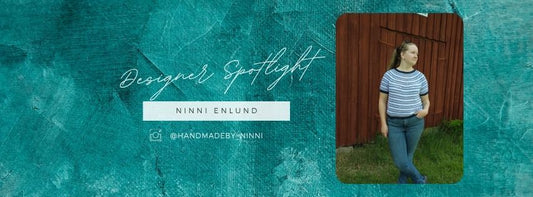
The Perfect Baby Socks - Junasukat
Share
Baby legs are notoriously chubby and stubby. This means that standard-shaped socks don't always stay on very well.
Enter: Junasukat. Finnish train socks are the perfect baby socks. The combination of ribbing and alternating rolls of purl and knit rows helps them stay on pudgy little baby legs.

The Origin Story
The origin of this pattern as the train socks dates back to early 1940. It was the Winter War, and Kerttu Kulmanen was on the train with her two-month-old daughter Tuula, traveling from Vaasa to Kauhajoki to escape the danger of a larger port city. The train was stopped as the tracks were closed for concerns of bombing, and it got cold.
A retired handicrafts teacher was sitting across from the two evacuees, and felt bad for the baby's cold toes. She had needles with her, but no yarn, so she unraveled her hand knitted cardigan, and began knitting socks while they waited. She didn't finish the pair before the train got moving again, but she gave Kerttu enough yarn from her cardigan to finish the second sock, and told her to not adjust the pattern. These stay on baby feet so well.
The Legacy
Kerttu was so touched by the gesture, that she knitted train socks for her whole life. She donated them to charity sales and gave them as gifts. She would not accept payment for them, they were always to be gifted, and always passed on the story with each pair of socks. Kerttu's daughter, Tuula's sister, Terttu continued the tradition, knitting her first pair at the age of ten. She says she has knitted hundreds of pairs of train socks over the years.
In 2007 Terttu's friend Eila Turenius taught the pattern at a Taito Etelä-Pohjanmaa knitting class, and told them the story. They published the pattern and the story in the fall issue of their Kerinlehti-magazine. It touched people all over the nation and now thousands of pairs of train socks have been knitted. Not only is the design great for baby legs, the pattern is easy to memorize. Eila even sent a pair to Prince William and Kate Middleton's baby (though I'm not 100% sure if it was George or Charlotte).
In 2017 Kodin Kuvalehti-magazine published an interview with Terttu. They included a picture of the original socks, which are now framed as they've seen some wear and tear after 50 years. You should definitely check them out, they're adorable.
The Pattern
The original train socks pattern is for fingering-weight yarn, and knit with 2.5 mm (US 1.5) needles. It is very easy to adjust to different yarn weights, though. Thicker yarn with the same stitch count = bigger socks. Fewer stitches= smaller socks or the same size depending on yarn weight. With these socks it's not as important to have a reinforcement like nylon in the yarn, as covered in Sock School - Lesson 1, since babies won't be putting as much wear on them. This is a perfect opportunity to use a soft merino wool or even a silk blend yarn.
The pattern can be found on many blogs and websites, including the ones I've linked above. You can also find it on Ravelry if you'd like to add it to your library.
- Cast on 40 stitches (s), join in the round. Distribute the stitches onto four double-pointed needles, two FlexiFlips, onto circulars with Magic Loop, or whatever your preferred sock needles and method are. If needed, place a stitch marker after every 10 s
- Work 12 rows of k2, p2 ribbing
- Purl 4 rounds, knit 4 rounds, purl 4 rounds
- Repeat steps 2 and 3
- Work 12 more rows of k2, p2 ribbing
- Knit 10 s, turn the work, slip 1 s purlwise, purl 20 s. Leave the remaining stitches to wait
- Work the heel flap flat for a total of 12 rows, slip the first s of each row (you can work a reinforced heel by slipping every other knit stitch if you want, but since these are baby socks that's not necessary)
- Slip 1, Knit 11 s, make a ssk-decrease, turn the work
- Slip 1, Purl 4, p2tog, turn the work
- Repeat steps 8 & 9 until your run out of stitches on the sides and 6 remain.
- Pick up 7 s from each side of the heel
- Work 4 rounds of k10, p20, k10
- Knit 4 rounds of stockinette
- Repeat rounds 12 & 13 two more times, then round 12 one more time
- Shape the toe: at the end of the 1st and 3rd needles k2tog, k1; at the beginning of the 2nd and 4th needles k1, ssk - continue until 4 s remain
- Break the yarn, thread through the remaining stitches, tie off and weave in the ends
Steam the completed socks gently, wrap them up nicely, and give them away. And share pictures with me!



